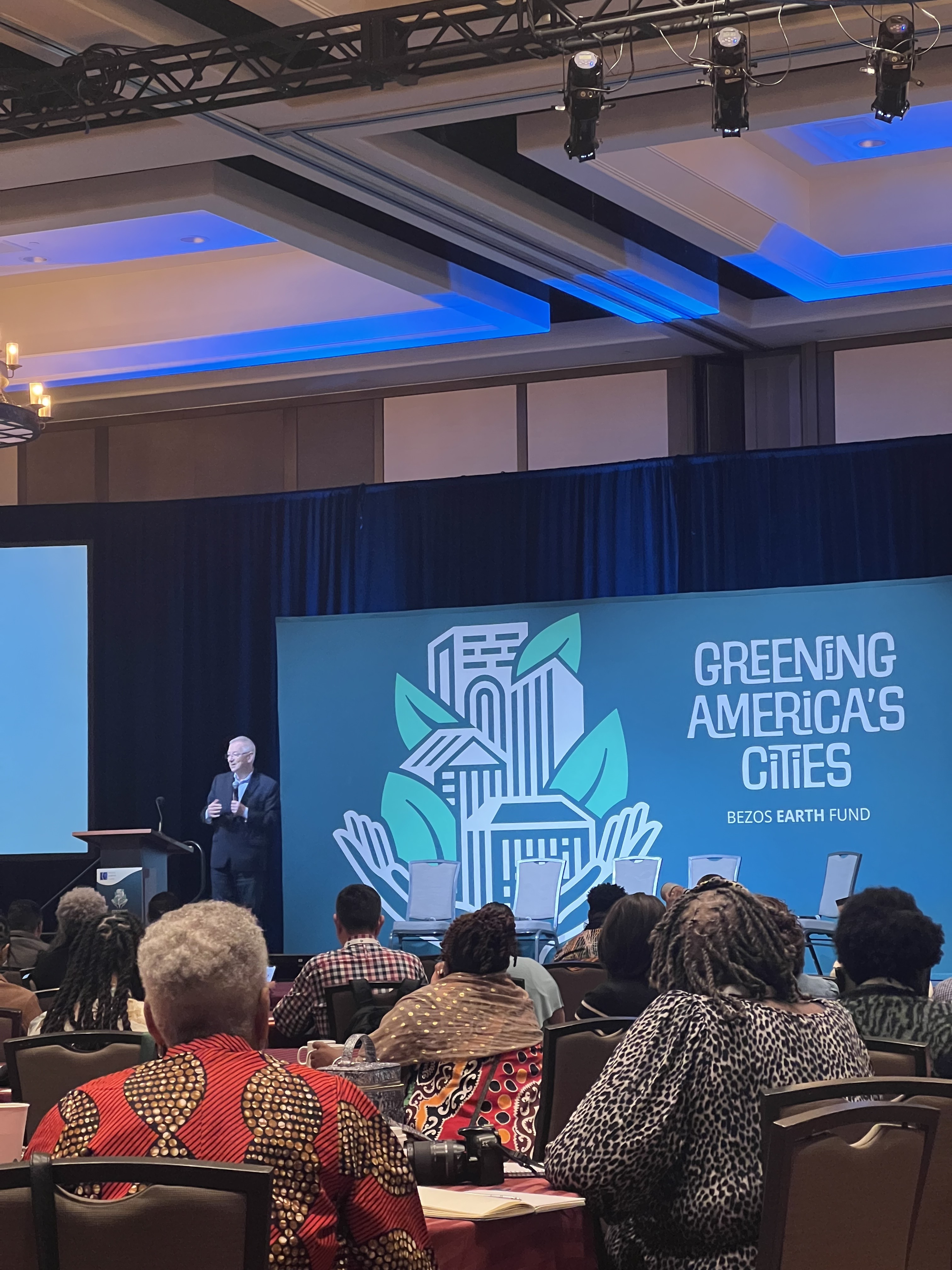 The aroma of red Sandia chile peppers slapped me across the face as I filed into the greenhouse. Looking around, many of the same hands I’d seen swatting at bugs above the muddy Acequias earlier today were now covering noses, attempting to tolerate the sweltering heat while marveling at the expanse of tables layered with drying peppers. Gratitude swept over me for the love of spice, the opportunity to learn about the Urban Greening and environmental justice movements and plant the seed of storytelling.
The aroma of red Sandia chile peppers slapped me across the face as I filed into the greenhouse. Looking around, many of the same hands I’d seen swatting at bugs above the muddy Acequias earlier today were now covering noses, attempting to tolerate the sweltering heat while marveling at the expanse of tables layered with drying peppers. Gratitude swept over me for the love of spice, the opportunity to learn about the Urban Greening and environmental justice movements and plant the seed of storytelling.
Empowering Grassroots Organizations
This year, the Bezos Earth Fund (the Earth Fund) launched the Greening America’s Cities (GAC) initiative, which will award $400M to 30 community environmental justice organizations through 2030. Recognizing that grassroots organizations have expert knowledge of their communities, GAC provides funding to organizations in Albuquerque, Atlanta, Chicago, Los Angeles and Wilmington, Del. Beyond financial support, GAC is building a network to connect these organizations. It aims to empower them with resources and tools to further their missions. GAC engaged Fenton to help these organizations tell their stories, leading a digital storytelling training during its Fall 2024 Greening Convening.
 Understanding the Urban Greening Movement
Understanding the Urban Greening Movement
As the location of the Fall 2024 Greening Convening, Albuquerque, New Mexico, is one of many cities across the country experiencing “green deserts,” or a lack of access to green spaces like public parks or community gardens resulting from historic underinvestment, environmental degradation and systemic racism. During the opening plenary, GAC’s lineup of speakers helped contextualize this challenge, including President and Earth Fund CEO Sir Andrew Steer, who highlighted our need for nature. Many studies connect physical, mental, social and spiritual well-being to the outdoors. Improving city dwellers’ health can unlock 20-25 billion years of higher quality life; that’s five extra years for each urban resident, according to the McKinsey Health Institute.
Following the plenary, I was privileged to tour urban farms and educational and cultural centers to learn about the work of these organizations and explore the deeper purpose of the Urban Greening movement. Intertwined in this movement are calls for environmental justice, the reclamation of public land and the liberation of historically oppressed communities. As the future of the Environmental Protection Agency is uncertain and we prepare for rollbacks of already insufficient protections, maintaining momentum for the Urban Greening movement is more imperative.
Digital Storytelling as a Tool for Change
In two sessions with over 60 grantee leaders, we highlighted that digital storytelling is a necessity in today’s social media landscape and an effective method to convey the importance of Urban Greening. Effectively leveraging storytelling on social media can expand an organization’s reach, whether to policymakers, potential donors or the Urban Greening community nationwide. Digital storytelling can also:
- Humanize complex information: Stories that distill jargon, center people and use empathy can build understanding of issues.
- Drive awareness of key issues: Good stories command attention, especially when they engage our senses.
- Build relationships and grow communities: Stories can generate brand awareness and encourage call-to-action engagement.
- Showcase organizational impact: You are the protagonist! Stories can inspire hope, and action, and generate momentum within your movement.
 Compelling stories lead with emotion, use an authentic tone that will resonate with audiences and follow a simple structure. They must include arresting visual images or videos and fit the unique needs of each platform.
Compelling stories lead with emotion, use an authentic tone that will resonate with audiences and follow a simple structure. They must include arresting visual images or videos and fit the unique needs of each platform.
Digital storytelling doesn’t stop after you hit “post.” Community management is crucial for movement-building. During our training sessions, we stressed the importance of building time daily to scroll your feed. Liking, commenting and engaging with your peers and fellow changemakers expands the reach of your movement’s message and harnesses social media algorithms. Equally important is monitoring how your stories perform. Are specific messages going viral while others haven’t received a single like? Trial and error is a key part of our day-to-day as digital storytellers, and each post tells its own story for how you can improve your strategy and content.



